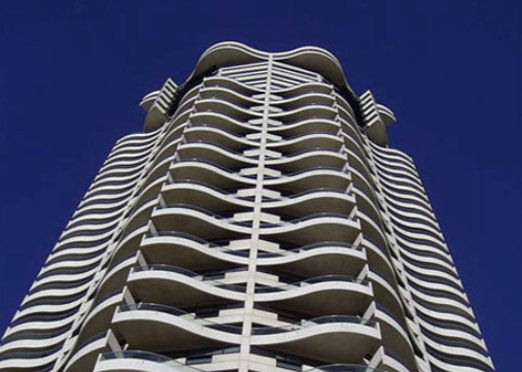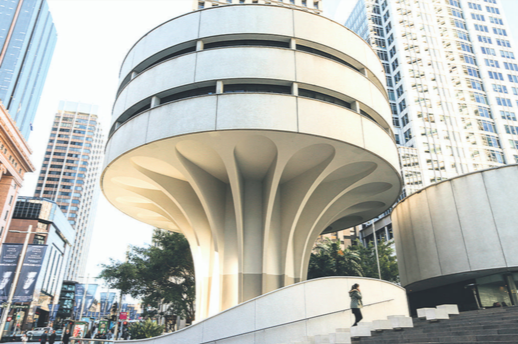|
Jairo Kerr Azevedo, Director, Medical Division, Carl Zeiss do Brasil Ltda.
This article was originally published on the May/June ABCC Newsletter.
0 Comments
 Anna White, Director ABCC Queensland One of the great success stories in the Australia-Brazil bilateral relationship – international education and training – was the theme of the ABCC’s latest Business Briefing and Networking event in Brisbane in March. Study Queensland generously hosted the event and the then Brisbane Lord Mayor Graham Quirk delivered the key note address highlighting the importance of international education and training to Queensland. With over 12,000 Brazilians currently studying in Queensland, the Lord Mayor emphasised the role that international education experiences can play in building lasting relationships with investors and entrepreneurs of the future. Brisbane City Council has introduced a range of measures to support international education and training including appointing International Student Ambassadors and expanding its internship programs to create greater opportunities for international students. In 2015, the Council reduced infrastructure charges for certain student accommodation developments to encourage greater provision across the city. After hearing from Lord Mayor Quirk, the ABCC was delighted to be joined by a panel of experts comprising Shannon Willoughby, Executive Director of Study Queensland, Professor Stuart Bunn from Griffith University, Professor Asantha Goonetilek from QUT and Professor Gary Schenk from the University of Queensland. Honorary Consul of Brazil in Queensland, Valmor Morais, also shared his reflections throughout the panel discussion. The panel shared their experience and insights into the strategic research partnerships which have been established between Australian and Brazilian universities in recent years since the conclusion of the Science Without Borders program in late 2015. Some partnerships have been facilitated through the Program of Internationalization of Higher Education – or “PRINT” – which was launched in 2018 by the Brazilian Federal Agency for Support and Evaluation of Graduate Education (CAPES) with a focus on the two-way movement of postgraduate students. Others have developed through the targeted coordination of joint efforts here and in Brazil. While Brazilian universities have traditionally looked north to their American counterparts to collaborate on research projects, they are increasingly engaging with Australian institutions given the similar climate, environment and health impacts across the two countries. The Panel identified key growth areas in which Australian universities could further promote their expertise to Brazilian universities and direct to Brazilian governments and agencies, including water management, environmental management, resource management, biomass conversion and sustainable farming (particularly cattle breeding). Access to government grants to support bilateral research projects in Australia is limited and there appears to be scope for alternative options to be explored, such as leveraged funding models. There also appears to be scope to expand internship programs which would enhance and deepen each student’s international experience. Brisbane’s liveability and relaxed lifestyle hold great appeal to Brazilian students. Outside of structured university programs, student support services such as The Brisbane Study Hub and The Gold Coast Student Hub provided by Study Queensland and Study Gold Coast respectively provide essential services to Brazilian international students, particularly those undertaking English language courses. With a move to increasingly targeted and specialised partnerships and a strong focus on academic performance, opportunities for Brazilian post-graduate students will continue to strengthen in Australia. This article was originally published on the May/June ABCC Newsletter.
From your airplane window you begin to contemplate what it looks like to be a green ocean. You can then identify water cutting through the forest. It takes almost 7 million square kilometres throughout nine South American countries: Brazil, Bolivia, Peru, Colombia, Ecuador, Venezuela, Guyana, Suriname and French Guiana. The Amazon has the greatest biodiversity in a rain forest in the world and it attracts tourists from all over the world. Manaus is the capital of the Amazon State is also called Paris of the Tropics, because of its intense modernisation during the Rubber Boom and the beautiful buildings built from materials imported from Europe. It is also the natural entrance for the people who want to visit the forest. The iconic Amazon Theatre is a place not to be missed. This beautiful theatre was build between 1884 and 1896 at the height of the rubber boom, using European designers and decorators and raw materials and in the area. Another must see is Ponta Negra Beach. Recent work has been done alongside its shoreline and it is a great place for a stroll where you will find many local delicacies such as acai and tacaca, a variety of soup cooked with tucupi, dried shrimp, cassava gum and jambu leaves. amongst other local delicacies. The wide river is very beautiful and perfect for a swim. From there, you can make your way to the majestic Hotel Tropical, famous world wide for its rich timber work, vast corredors, wave swimming pool and a mini zoo, home to animals such as monkeys and “onca pintada”. Boats are the main transportation to the rainforest hotels and to see the meeting of waters between Negro and Solimoes rivers, forming one of the largest rivers in the world: the Amazon. The two different colour waters meet and only mix kilometres later. One is darker tea colour tone and the other a colder brown looking one. This is a true nature spectacular site to see. Whether your prefer to check out the historical buildings or to enjoy swimming with dolphins in the river, the impact of the abundance of water and green will forever stay with you forever. This article was originally published on the May/June ABCC Newsletter.
 Sérgio E. Moreira Lima, Ambassador of Brazil The connections between the two giant territories of the South provide a remarkable foundation for understanding and facing our common contemporary challenges in conserving our rich and unique heritage and biodiversity. Australia and Brazil should further explore these links in the pursuit of sustainable development to ensure the wellbeing of present and future generations. It is therefore a reason to celebrate the efforts by the two countries to enhance their collaboration in science and technology. Both governments recently concluded a general agreement on the subject, which is expected to be in force in 2019. On its turn, CSIRO and EMBRAPA are finalizing an important agreement on R&D cooperation. These agreements will contribute to institutionalize and promote scientific cooperation in key economic areas, such as agriculture technics and methods of production. They will also assist both countries to fulfil their national and international responsibilities in food security and environmental sustainability. 2. CSIRO - Commonwealth Scientific and Industrial Research Organisation – is Australia's national science research agency responsible for overcoming the country’s greatest challenges using innovative science and technology. EMBRAPA - The Brazilian Agricultural Research Corporation - aims at establishing a model of tropical agriculture and livestock to overcome the barriers that limited the production of food, fibre and fuel in our country. It has played a pivotal role in making Brazil - with its over 210 million inhabitants - not only self-sufficient in agriculture production but also a breadbasket of the world and an important contributor to global food security. Brazilian agriculture is one of the most efficient and sustainable in the planet. Brazil has incorporated a wide area of formerly degraded Cerrado lands, a savannah like biome, into our production systems; a region that now accounts for nearly 50% of our grain production. We have quadrupled the beef and pork supply and increased the poultry output 22-fold. These achievements have moved the country from the condition of basic food importer to one of the world's largest food producers and exporters. 3. The cooperation between Australia and Brazil is becoming more relevant and less fragmented. Brazilian scientists are in CSIRO and in other Australian research centres and Universities collaborating with their Australian peers. Yet much remains to be done in order to fully institutionalize bilateral cooperation. That is exactly the purpose of the EMBRAPA-CSIRO MOU. Besides, it aims at structuring, broadening and giving focus to Australia and Brazil partnership in agriculture and biotechnology. While growth in demand for food, feed, fuel and fibres presents significant opportunities for agriculture, our research institutions must provide the know-how to overcome challenges such as increasing productivity growth, enhancing environmental performance and adaptation to climate change, and improving resilience of farm households to market shocks brought on by weather conditions and other unforeseen circumstances. Farmers will have to adapt to the new instruments of the digital age. But governmental policies and research institutions must assist them in the process by creating incentives to the development of the better and more sustainable ways for agriculture production, which involves soil, seeds, pollinisers, production, rational use of water, smart management of crops, etc. Brazilian scientists collaborate with Australians in a project to identify the reduction of the population of bees worldwide and their impact on agriculture. This is just one example of the activities of global impact in which Brazil and Australian experts are working side by side to increase farm sustainability, productivity, resilience and overall profitability. 4. In 2018, Brazil and Australia signed an MOU on the management of water resources. Australia provides an encouraging example of the use of desalination in its major cities around the country from Sydney to Perth. This is another area in which joint research can bring important solutions for both countries as they face the challenge of ensuring adequate water supply in hinterland regions where hydric resources are scarce. Brazil is keen to collaborate on the development of innovative and affordable technics that enable the desalination of salty waters sourced from artesian wells, especially in the northeast of the country, where a new and promising agricultural frontier can be opened. 5. About one hundred Australian companies are established in Brazil. Traditionally, mining has been the sector which has attracted most investments in partnership with Brazilian firms. In the last decade, Brazilian companies have increased investments in Australia, not only in mining but mainly in animal protein processing. JBS Australia has become the largest meat processing company in this country with a network of facilities from Queensland to Tasmania. It employs over 12,000 people across Australia and, besides maintaining its market shares, it exports from here quality products to over 80 countries. 6. This month during the Avalon Air show, an event that promoted the development of the aeronautical industry in the region, Embraer celebrated its 40 year presence in Australasia showcasing two of its most sold aircraft in the world, the Phenon 300 E and the Legacy 500 Executive jets. There are 34 Embraer aircraft that fly in the region, of which 25 are commercial aircraft and 9 are executive jets. Embraer has Authorized Service Centers located in Melbourne, Sydney and Perth. Embraer has changed the way to travel in Brazil and it is looking forward to expanding its presence in the Australian market with its new family of modern regional airplanes as well as new defence equipment, such as the KC 390 - a new generation of multimission transport aircraft. Embraer presence in Australia is a reason of pride for the Brazilian community and it is an encouraging signal of the enormous potential for trade in goods and services between the two great nations and the region as a whole. The Chambers of Commerce and the Business Council have a role in enhancing the possibilities for promoting exports of airspace equipment to Australia and strengthening regional aviation. In Melbourne during the week of the Avalon Airshow, I had the pleasure of meeting the Governor of Victoria and also attending a social gathering organized by ABCC with its local members and the Brazilian community. 7. The latest figures for Brazil and Australia bilateral trade in the year 2018 shows an overall trade of US$ 1.6 billion, with a significant surplus for the Australian side. Yet the numbers barely reflect the enormous potential for a significant expansion of both flows of exports and imports which might be more compatible with the size of both countries’ economies. In order to help to promote the role of the chambers, I participated in February in events organized by the Australia Brazil Business Council in Sydney and by the Australian Latin America Business Council (ALABAC). Brazil and Australia are considering negotiating agreements to prevent double taxation and to facilitate trade between the two countries. At the moment, APEX, the Brazilian Agency for Exports and Investment, is requesting Brazilian companies and exporters to provide information on trade barriers which might improve the intelligence and the assessment of prevailing conditions for trade in goods and services between Brazil and other countries, including Australia. With the support of AABC and other relevant organizations, we hope this mapping of perceived barriers will assist us to focus our attention where it is most needed, helping to increase trade and investment between the two countries. 8. The assistance and advice of the Australian Brazilian Chamber of Commerce and its members will be invaluable to our common effort to improve current trade and investments as well as on bilateral cooperation. Together we will be able to create the necessary conditions to significantly improve economic relations between the two countries and raise science and technology cooperation to a new level. This article was originally published on the May/June ABCC Newsletter. ABCC member, Unik Vision, organises trade missions and special events to showcase the excellence on offer in Brazil. In September 2019, Unik Vision is coordinating a Brazilian Modernism Architecture Tour aimed at architects, engineers, designers and anyone interested in Modernism and the work of Oscar Niemeyer. Unik Vision has appointed Brazilian architect, Simone Bigoto, to be the Ambassador for this upcoming tour. Simone recently caught up with the ABCC to explain her experience working with the famous Australian architect Harry Seidler in Australia and her connection with Oscar Niemeyer in Brazil which gives her a unique perspective on Modernism architecture across the two countries.  Left to right: Val Oscroft, Monica Rodrigues Sweeney, Penelope Seidler, Simone Bigoto, Dani Oliver, Richardo Bigoto Australia and Brazil have a long history of connecting across different sectors, including architecture. It is an honour to be chosen as the Ambassador of the Unik Architecture Tour. My relationship with both countries began 17 years ago when I first lived in Australia. I came to Sydney at the start of 2002 after having completed a Bachelor in Architecture at Mackenzie University – Sao Paulo. I came to Sydney to study a Post Graduate Course in Stage Design, because dance and architecture are two arts that have been part of my life since I was 14 years old. During this time, I was preparing myself for a Business and English course at UNSW to get into the Scenography course I had planned and I applied for a job as an Architect which started my work with one of my mentors: Harry Seidler. It was a wonderful experience for me to have worked with Harry Seidler and all his team on my journey. After months working closely with him and his team, at the end of 2002 I decided to come back to Brazil to get married. As soon as Harry knew that, he kindly tried to convince me the opposite and asked me to stay in Sydney to continue working at his office but at that moment the better decision for me was to return to my country. Before I left his office, Harry introduced me to his great friend Oscar Niemeyer. It was the most wonderful surprise that a young Brazilian architect like me could have! In 2003 just a couple of weeks before I get married I had the honour of meeting the genius Oscar at his own practice in Copacabana, Rio de Janeiro. The connection between me and both genius architects never stopped even after I started my own architecture office in Sao Paulo in 2003... and here I am again, back in Sydney with my husband, Ricardo and my 2 children, Gustavo an eleven year old boy and Isadora, a ten year old girl. We all moved in February last year and I have been working in the architecture field in Sydney since April 2018.
|
Sign up for the weekly ABCC newsletterCategories
All
ABCC EventsLoading... Back editions of the quarterly "Boletim Brazil" are available HERE
|
COPYRIGHT AUSTRALIA BRAZIL CHAMBER OF COMMERCE 2020




















 RSS Feed
RSS Feed